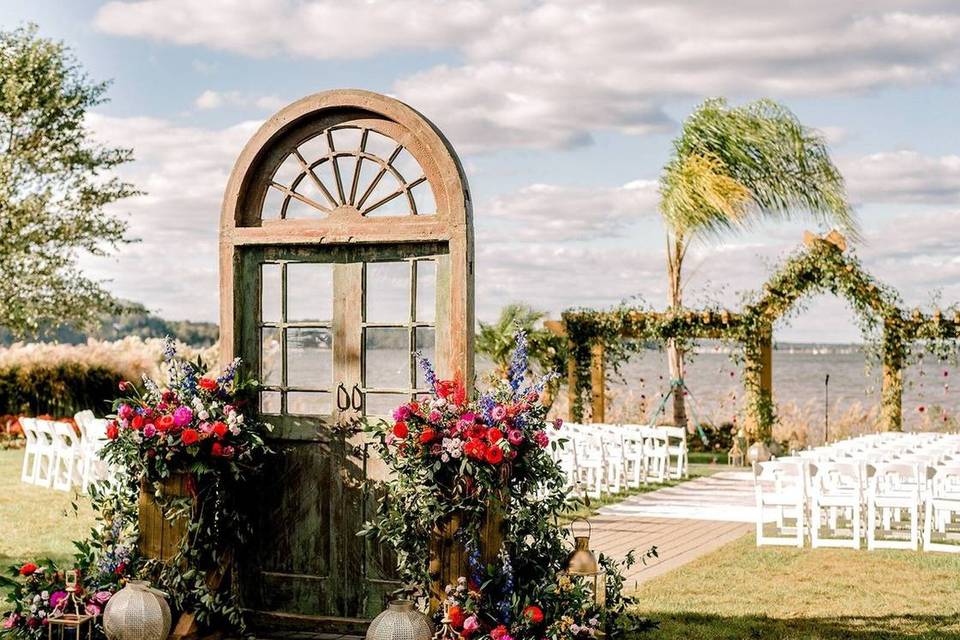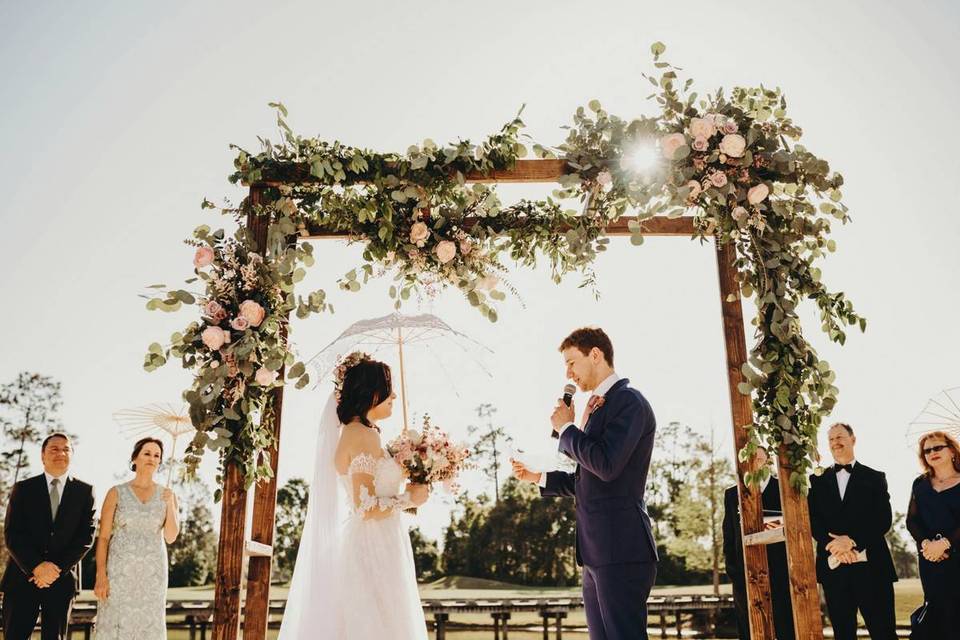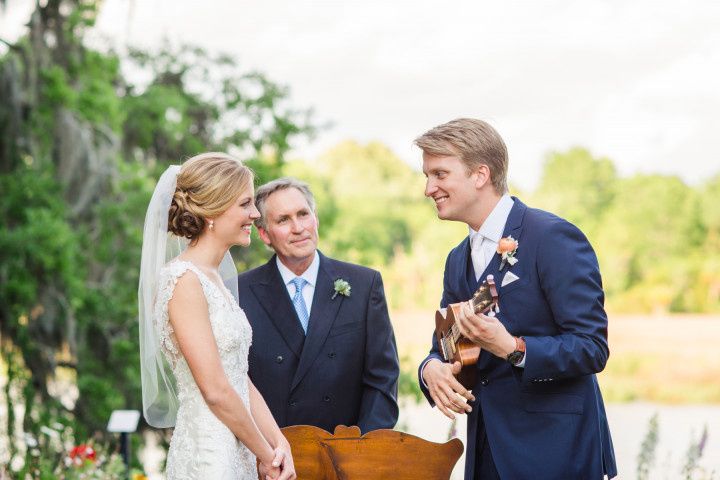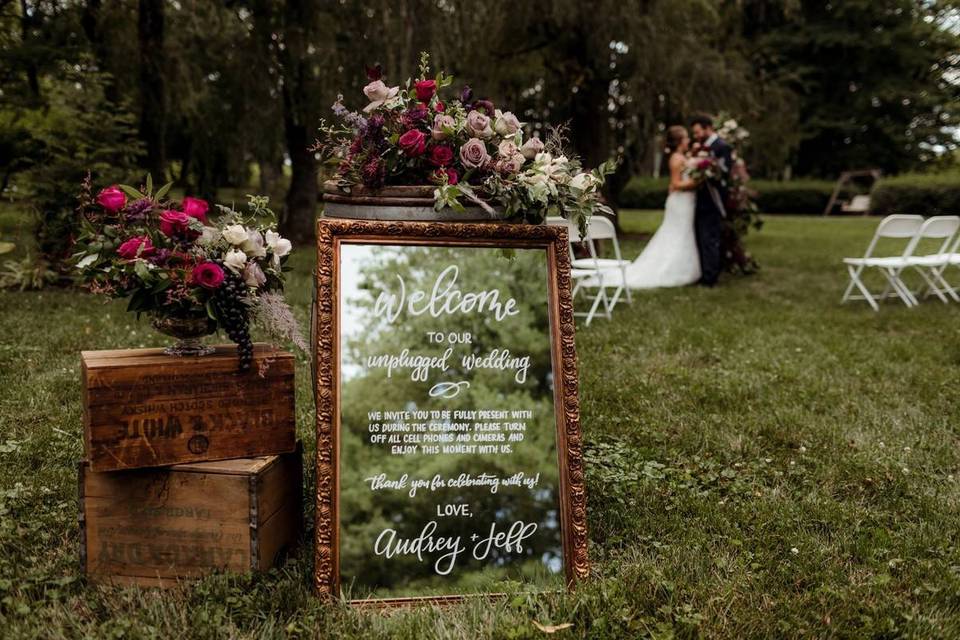How to Usher a Wedding Ceremony
If a couple has asked you to usher, it’s because you’re an important person in their lives. Here’s how to succeed in your role:
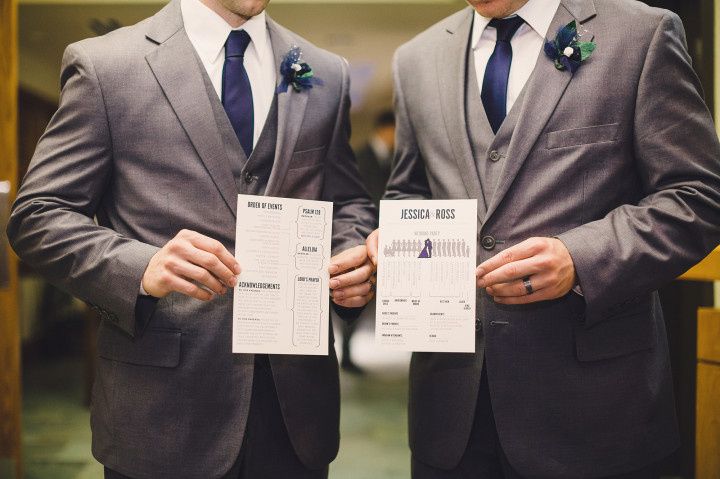

Photo: Oldani Photography
Congratulations, you’ve been asked to usher a wedding! If a couple has asked you to do this honor, it’s because you’re an important person in their lives and they want you to play a special part in their big day. So don’t take it lightly! Here’s how to succeed in your role:
Know your duties
As an usher, your role is essentially to guide guests and help the ceremony run smoothly. The exact duties vary slightly from wedding to wedding, but users are typically in charge of manning the ceremony entryway, handing out programs, escorting guests to their seats, and providing basic information and assistance to any guests who may need it. Ushers are typically required to arrive to the wedding ceremony about an hour before it begins. Note: While groomsmen are often asked to double as ushers, an usher can also be a separate role fulfilled by a non-groomsman who is close to the couple. Either way, being a wedding usher is an honor!
Ask about attire
Since you are participating in the ceremony, you will likely be given some attire requirements. The couple may give you some general guidelines to adhere to (e.g. wear a dark blue suit, white dress shirt, and pink tie of your choosing) or they might ask that you rent or purchase specific items if they’re going for a more uniform look. Find out what you’re expected to wear, and make sure you allow plenty of lead time for special orders and tailoring.
Brush up on basic ushering etiquette
Since your main job will be escorting guests to their seats, let’s go over exactly how to do that. You will accompany guests to their seats, filling up the front (non-reserved) rows first and working your way backward from there. When escorting a female guest, you will offer your right arm to her and walk her down the aisle to her seat. When escorting a male guest, you will simply walk beside him and show him to his seat. If you are seating a couple, escort the female on your arm as noted above and have the male follow behind you. If you are seating multiple women at once, escort the eldest on your arm and have the rest walk behind you. Always wait at the end of the row until the guests have been seated before returning to the start of the aisle and escorting the next guest or group. Of course, you’ll want to pay special attention to reserved rows and accommodate any seating requests previously noted by the bride and groom—but we’ll cover that in a second.
Pay special attention at the rehearsal
In order to successfully usher a wedding, you’ll need to become well acquainted with the ceremony logistics. Luckily, there’s a rehearsal for that! It’s important that you show up to the rehearsal on time, pay attention to the coordinator’s instructions, and ask any questions you may have. Jot down notes if necessary—better safe than sorry! Below, we’ve outlined a few key items every usher should take note of during the rehearsal. If you have these covered, it will be smooth sailing!
Familiarize yourself with the VIPs
The first few rows of seats are typically reserved for family, guests needing special assistance, and other honorary guests. Find out who those important people are, and which rows are to be designated specially for them. We recommend requesting a written list or seating chart of VIPs to prevent any mix-ups. Remember that the bride’s VIPs will be seated on the left side of the aisle, while the groom’s VIPs will be seated on the right. The immediate family will be seated last, just before the start of the ceremony. Make sure you walk through this during the rehearsal so you will get it right the next day.
Note any other special considerations
Is there an elderly guest who needs extra assistance? A guest who isn’t feeling well and should be seated in the shade? Are there two feuding relatives who should be seated as far away from one another as possible? Inquire about any unique circumstances or special accommodations you may need to be aware of.
Ask about designated sides
Find out whether the couple would like non-family guests to be seated on a designated “bride’s side” and “groom’s side” of the aisle. This practice has become less and less common, with many modern couples opting for the “choose a seat, not a side” route. Still, it’s best not to make any assumptions. Find out what the couple prefers. If they do want to go with designated sides, you will be responsible for asking each guest which side they are on as you escort them down the aisle. If a guest is friends with both the bride and groom—which is often the case—simply use your best judgment and place them on whichever side has more available seats.
Study up on basic info
When the ceremony is over, the ushers act as point people and help ensure a smooth transition to the next part of the celebration. As an usher, you should be prepared to stick around after the ceremony to direct guests to the next location or answer their questions. Note the location of the restrooms, card/gift table, guestbook, parking lot or valet, hired transportation, and coat check. If the reception is being held at a separate location, familiarize yourself with the address and even some basic driving directions just to be safe. If the ceremony and reception are being held at the same location, the directions may be as simple as “cocktails are being held in the ballroom down the hall on the first door to the left,” but it’s still important to have someone on hand to keep guests moving—and that’s your job!

